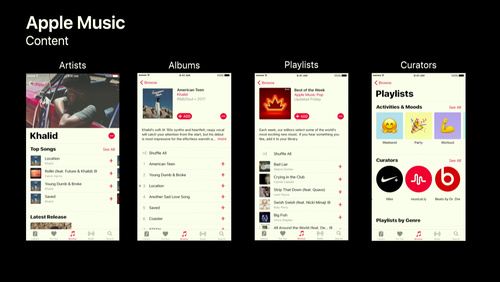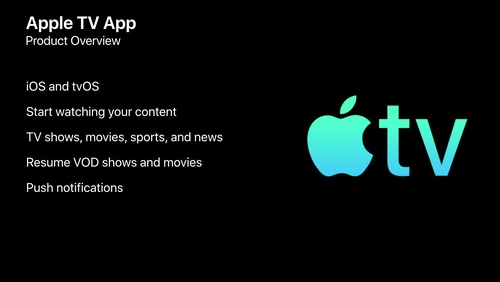

#APPLE WWDC 2017 VIDEOS MP4#
So that means if you're going to deploy your HEVC content to HLS, it has to be packaged as MP4 fragments. And so we decided that it was a good time to refocus our attention on a single container format and we looked at the alternatives and we decided that fragmented MPEG-4 had the most legs going forward. The first is that HEVC represents an entirely brand new encode of your content for a lot of people, and that means on the bright side there's no compatibility version - burden, rather. And to use it with HLS there are a few things you need to keep in mind. So, HEVC is going to be a lot of different places.
#APPLE WWDC 2017 VIDEOS TV#
That will include the Apple TV with tvOS 11 and Macintoshes that are upgraded to High Sierra.

And so that will be on all the iOS devices receiving, iOS 11.
#APPLE WWDC 2017 VIDEOS SOFTWARE#
Even on devices, on older devices that don't have that hardware support, we are still going to deploy a software HEVC CODEC.

And in fact, on our newest devices, our newest iOS devices with A9 and later and our latest generation of Macintoshes, we have support for HEVC built into the hardware and so that includes support for FairPlay Streaming. Where can you get it? Well as we've said, we are making HEVC widely available. I mean, it depends on your content and it depends how good your encoder is, but 40% is a nice ballpark figure.Īnd for those of us who spend our time schlepping media over network that's exciting because first of all it means that your user is going to see startup at a decent quality 40% faster, and when the player adapts its way all the way up they'll see content that looks 40% better.Īnd so that's an important thing for us.

HEVC is around abouts 40% more efficient than AVC. Now, why did we do it? In one word, efficiency. As you heard at the keynotes and elsewhere, Apple has chosen HEVC as our next generation video CODEC. Now, let's move to the other big news of the conference which is HEVC. And so the way we're going to do that is we're going to introduce a new internet draft that will build upon the coming RFC as a baseline and so keep an eye out for that. And we're going to make it better and better for the user's streaming experience, starting with the things we're going to be talking about today. Now, are we going to stop improving HLS? No, of course not. And so publishing the spec as an RFC will allow it to serve as a stable reference going forward, which means that you'll be able to build on it with confidence, you'll be able to cite it in other specifications, and we hope it will help improve things a little bit in some areas of the industry. Now we've been sort of refreshing the draft for like 8 or 9 years now and there's a bit of question, okay, well why now? Why publish an RFC? One of the reasons is that we have heard feedback from some people that it's a little scary to be writing to a spec that's sort of continuously in draft mode. So what this means is that the current draft that's published on the site now, which is -23, will move through the IETF publication process and once it does then it will be assigned an RFC number. I am happy to announce that the IETF has approved the publication of the HLS spec as an Internet draft. We have some new CODECS that are interesting, we have some new streaming features, and we have some enhancements to our APIs.īut first, we have our own announcement to make. I'm going to be your host here tonight and we have a bunch of stuff to talk about. It wouldn't fit on the slide though so you kind of get what you get. Good afternoon and welcome to this year's edition of what the heck have those HLS folks been up to lately.


 0 kommentar(er)
0 kommentar(er)
